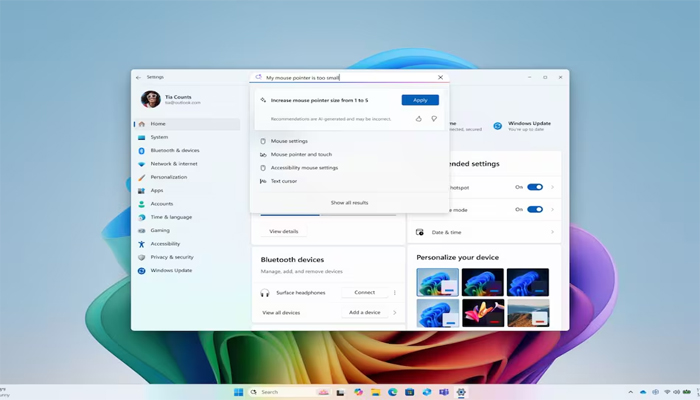
Microsoft officially launched the latest Windows 11 Insider Preview build to the Dev channel last week. The new update brings two new artificial intelligence (AI) features to users.
The Redmond-based tech giant is bringing an option to share the snapshots stored by Recall with third-party apps and websites in the European Economic Area (EEA).
Windows 11 receives its first AI agents
In a blog post, Microsoft detailed the new features among which the most notable is the introduction of AI agents.
Currently, AI agents will only be available to those users who have opted into the Windows Insider Programme and selected the Dev Channel as their preferred update channel. Additionally, they will also require a Snapdragon-powered Copilot+ PC to experience this feature.
With AI agents, users can type the changes they need in the Settings menu, such as “my mouse pointer is too small,” an AI agent will recommend the right steps to take to solve the issue.
Another new feature, available only to users in European Economic Area (EEA), is the Recall sharing experience. Windows Insiders in the region can now export their Recall snapshots and share them with third-party apps and websites.
To do this, users are required to remember their unique Recall export code, which will be shown when they open Recall for the first time and opt to save these screenshots.
“Microsoft does not have access to your export code and cannot help you recover it if lost,” the post added.
To export the snapshots, users are required to go to Settings, navigate to Privacy & Security and find Recall & Snapshots. From there, they will have to go to Advanced Settings and begin exporting the data after authentication.
Currently, there are two options for sharing Recall data. First is “Export past snapshots,” which will let users export their data from the last seven days, the last 30 days, or all past data.
The second option is “Export snapshots from now on,” which allows continuous export of snapshots after they begin sharing.
















